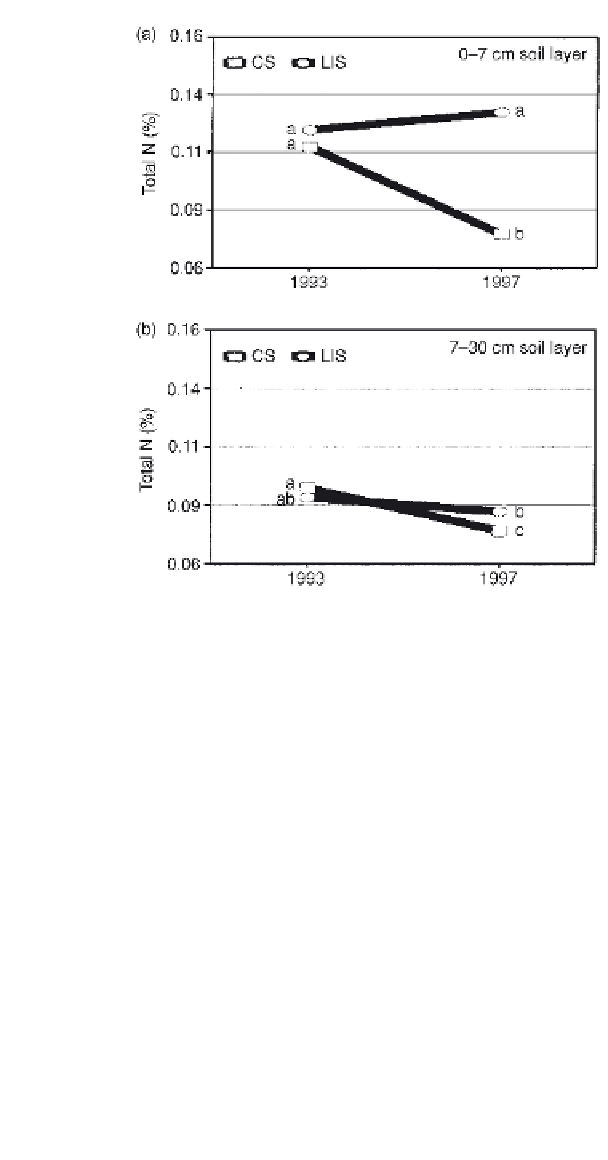Agriculture Reference
In-Depth Information
Fig. 3.8.3.
Total
nitrogen: 'year
×
management system'
interaction.
and as an interaction 'year
system' (Table 3.8.5). In fact, a sharper
increase was observed in LIS (155%) than in CS (86%) after 4 years. No
appreciable effect of crop rotation was observed on either total N or
assimilable P
2
O
5
content.
×
Discussion
Overall, the effect of crop management systems on soil fertility parameters
prevailed over that of crop rotation and was observed mainly in the upper
soil layer (Table 3.8.2). Use of no-tillage in LIS very probably helped
in preserving both soil organic matter and major nutrient content (N
and P
2
O
5
), as has been observed elsewhere (Dalal
et al
., 1995; Reeder
et al
., 1998). Besides reduced soil disruption, variations in these parameters
are also related to the amount of crop residues produced (Campbell
et al
.,
1996) and the use of fertilizers (e.g. phosphorus). In this respect, the
observed soil organic matter increase (compared with the initial level)
under LIS in the combined layer (0-30 cm) probably depended upon
the higher quantity of crop residues left on the soil surface, which
out-yielded setaside natural productivity in the study area (14.5 and











Search WWH ::

Custom Search